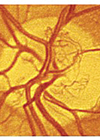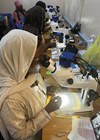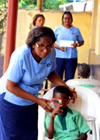This is the third article in a series (see Part 1 and Part 2) reflecting on how shared learning via networks of UK and international eye health professionals is contributing to reducing unnecessary blindness in Nigeria. Earlier articles focused on advances in the treatment of retinoblastoma through participation in Rb-NET [1] and the development of glaucoma services through Glaucoma-NET [2].
Background
Diabetes mellitus (DM) and its complications have been recognised as the fastest growing global public health emergency of the 21st century [3-5]. Diabetic retinopathy (DR), a specific microvascular complication of DM, affects one in three people with DM and is the leading cause of preventable vision loss in the working adult populations of many countries, including Nigeria [6-8], where DR constitutes a major part of the workload of retinal specialists [9].
Research in Nigeria has revealed the extent of the problem of DR. In recent years, Agweye et al. reported a DR prevalence of 26.5% in a diabetes clinic population in Calabar, Nigeria [10], while Kyari et al. reported a prevalence of 20.5% in a community-based study among people with DM in Nigeria [11]. The pooled prevalence of DR from a recent systematic and meta-analysis is 21.3% [12]. The most common risk factors for DR in Nigeria were duration of diabetes, poor glycemic control and hypertension [12]. These figures are likely to increase with continuing lifestyle changes and shifting demographics.
The onset and progression of DR can be delayed, and blindness prevented, by implementing a broad range of public health interventions including health promotion, retinal screening, timely treatment and rehabilitation.
Following the Diabetes Declaration and Strategy for Sub-Saharan Africa launched by the International Diabetes Federation (IDF) and the World Health Organization (WHO) in 2006, services for DM and DR have been developing across the continent, albeit slowly.
Participation in LINKS and DR-NET in NigeriaThe Calabar perspective: Dennis Nkanga, Consultant Ophthalmologist
In 2014, the Calabar-Wolverhampton VISION 2020 LINK was one of two Nigerian LINKS invited, with their UK partners, to join the Diabetic Retinopathy Network (DR-NET) in an international planning workshop for development of sustainable, systematic screening and treatment services for DR, held in the UK [14]. Before then, DR screening services in our centre were opportunistic, inadequately resourced, accessed in the eye unit and not systematically organised as a DR screening pathway.
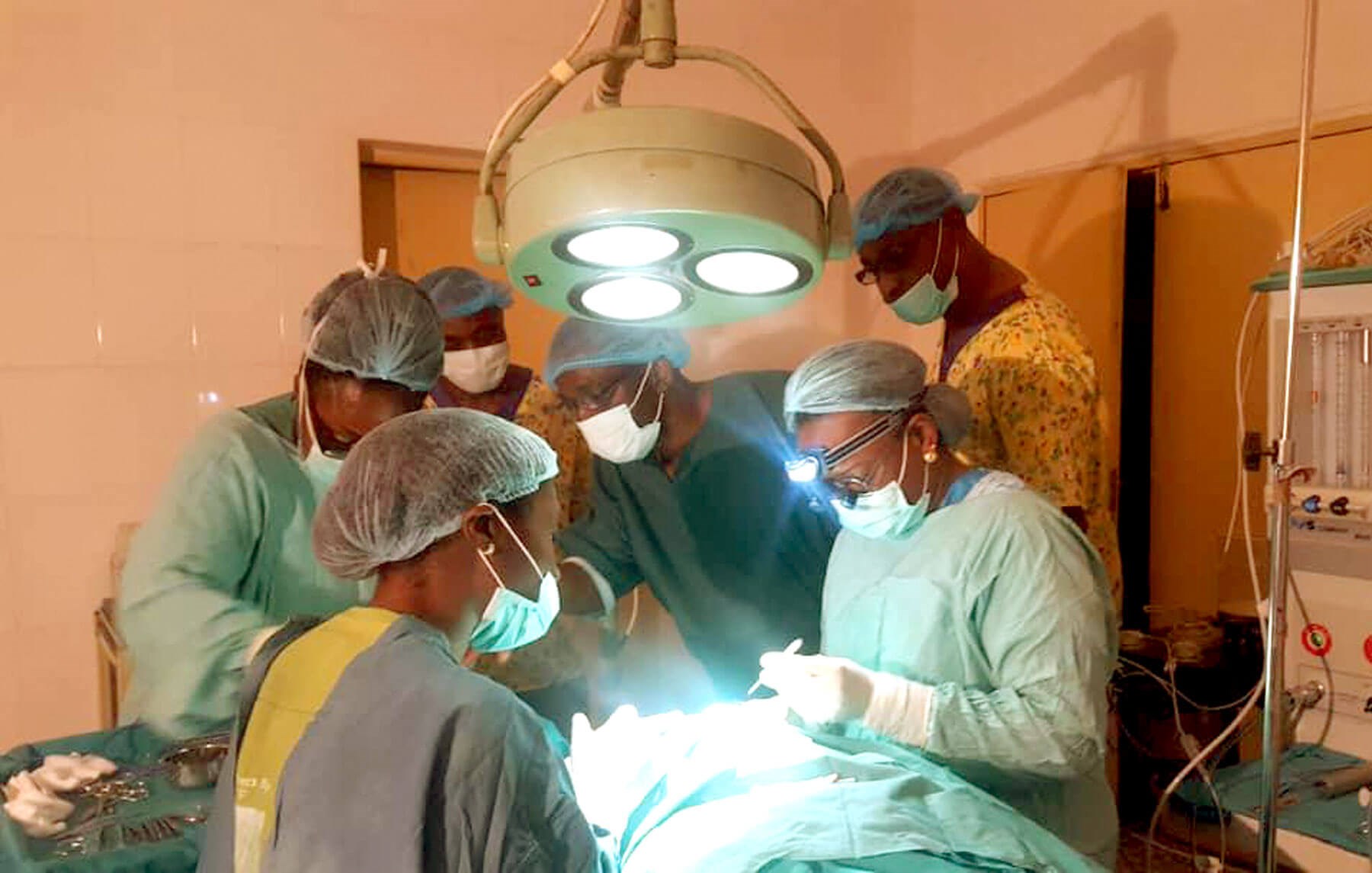
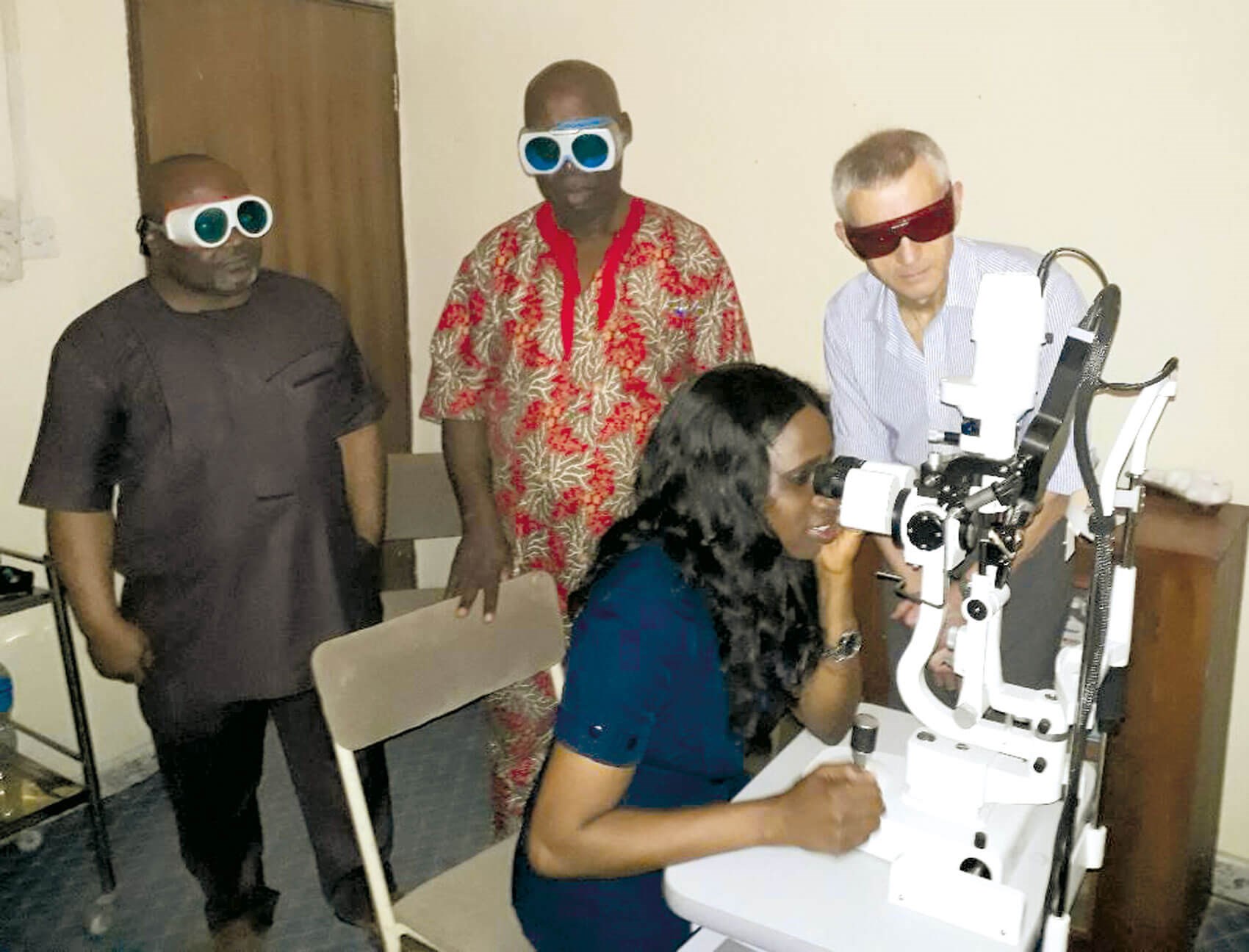
Figures 1 and 2: Capacity-strengthening activities in
Calabar through the VISION 2020 LINK and DR-NET.
Since the commencement of systematic screening in Calabar in January 2015, the DR-NET has offered sustained technical support and facilitated communication, collaboration, research and knowledge-sharing among the various cadres of healthcare professionals and stakeholders in DR management.
Our institution has hosted three LINK training visits, including a posterior segment laser ‘training of trainers’ (TOT) course. Five screener / graders and one ophthalmic instrument technician have been trained. Several other training activities are ongoing including periodic clinical meetings, DR-NET Grading Grand Rounds and other capacity-building initiatives.
The number of people accessing DR services in the Lions / University of Calabar Teaching Hospital Diabetes Centre has increased by about 400% in the first five years of the screening service. The VISION 2020 LINKS & Networks Programme has facilitated a stepwise improvement in our laser treatment capacity.
In Nigeria, the response has been fragmented; with no national health service and lacking a nationally effective framework, growth in DR screening has been largely opportunistic and focused on ophthalmology clinics. DM and DR care is delivered within a fragmented health system, both public and private, across primary care physicians, pharmacists, endocrinologists, ophthalmologists and hospital care, with great variability in quality and using different grading criteria and referral thresholds in different parts of the country.
The implication is that the opportunity for prevention and prompt treatment at early stages is lost. A paradigm shift towards a more cohesive, cost-effective, comprehensive and patient-centred approach is critical to making the necessary impact.
Addressing the challenges of DR in Nigeria
To address these challenges, the National Eye Health Programme (NECP) of the Federal Ministry of Health (FMoH) in Nigeria has provided leadership and collaborated with the VISION 2020 LINKS & Networks Programme [13] to drive change. Through a process of north-south and south-south co-operation and shared learning, the country’s eye health system has been improved by capacity-strengthening, infrastructure development and advocacy to improve the management and prevention of vision loss from DR at national and sub-national levels.
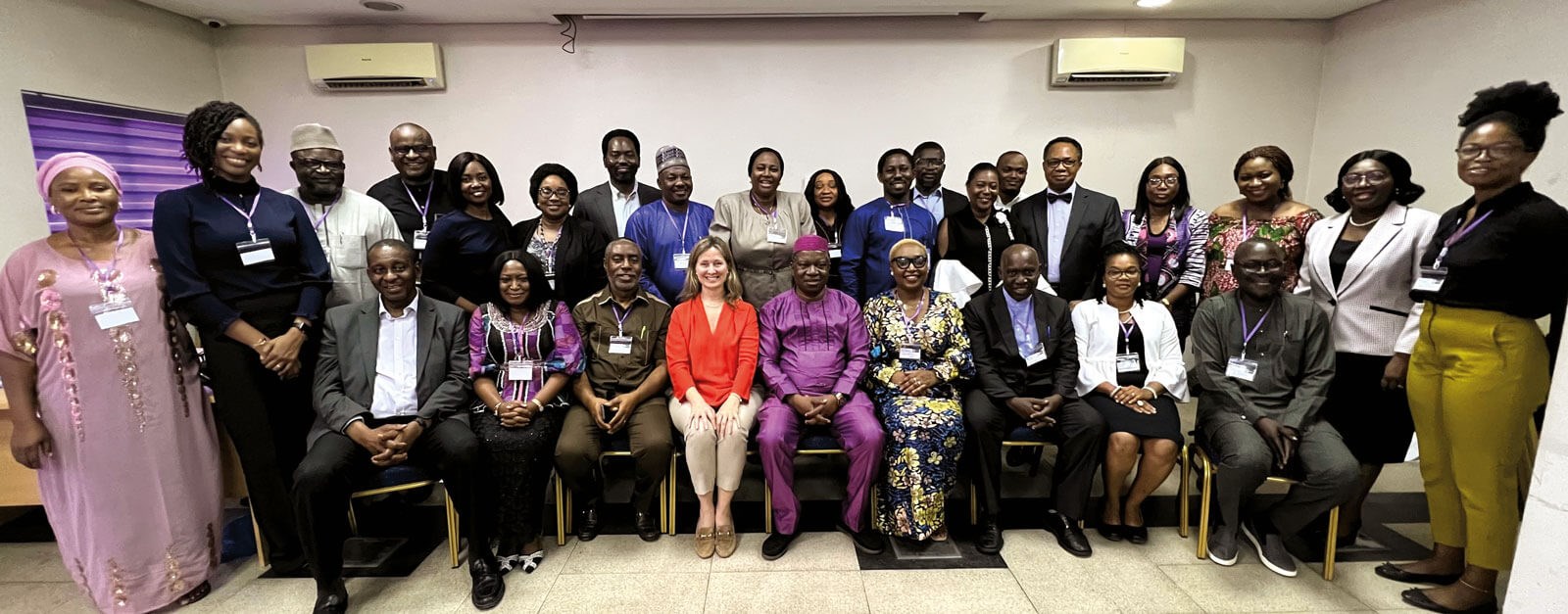
Figure 3: Participants in the National DR Stakeholders’ Workshop in Lagos in February 2023.
The National Eye Health Programme (NEHP) in Nigeria has been working alongside the DR-NET, strengthening treatment services at tertiary level and establising DR screening that is integrated into diabetes services. The VISION 2020 LINKS & Networks Programme and the DR-NET have been instrumental in strengthening DR services in Nigeria. Increasing awareness and collaboration with physicians and endocrinologists has led to an increase in the number of patients undergoing screening, timely diagnosis and treatment.
Furthermore, participation in DR-NET has led to a recognition of the need for stepwise improvements in infrastructure for DR screening, diagnosis and treatment. Equipment such as fundus cameras and posterior segment lasers have been provided in some participating healthcare facilities in Nigeria. This combines to improve the diagnosis and management of DR, as healthcare professionals can now make more accurate diagnoses and monitor the progression of disease and response to treatment.
Development of National Guideline for DR Services
The National Guideline for the Prevention, Control and Management of Diabetes Mellitus has been developed by the Non-Communicable Diseases Division (NCDs) of the FMoH [15].
Sustained advocacy with the FMoH resulted in the convocation of the first National DR Stakeholders’ Meeting in Nigeria in 2019. Subsequently a National Technical Working Group, which included international experts drawn from the LINKS Programme and the DR-NET, was set up to work with a multidisciplinary group of stakeholders on the development of a Nigerian National Guideline for DR screening and management. While the work was delayed by the pandemic, it is now back on track and in February 2023 the NEHP convened a two-day Stakeholders’ Workshop in Lagos.
The aim was to develop a guideline that aligns with the National Guideline for DM and integrates DR services into the routine diabetic service structures at primary, secondary and tertiary levels.
Stakeholders represented a broad range of organisations involved in DM and DR. They included: the NEHP and the NCDs Division of the FMoH, the National Health Insurance Agency, National Primary Health Care Development Agency, WHO, CBM International, Eye Foundation Hospital, International Agency for the Prevention of Blindness (IAPB), DR-NET, Ophthalmological Society of Nigeria, Nigerian Optometric Association and Nigerian Ophthalmic Nurses Association.
Welcoming the progress achieved at the Workshop, Dr Olutomi Sodipo, WHO Country Representative, stated that “WHO is committed to supporting the FMoH and partners towards the implementation of priority activities in diabetes prevention and control, especially as it relates to eye health, as well as the prevention and control of NCDs as a whole.”
The National Guideline recommends:
- Strategies to strengthen leadership and clinical governance
- Protocols that standardise care and define care pathways, including strengthening referral mechanisms
- Financing and sustainability systems
- Research to improve service delivery in the long term.
The draft document is currently undergoing ministerial review and will soon be available to guide the delivery of standardised care in an integrated, accessible and equitable manner.
The next stage is for the NEHP and its partners to pilot the implementation of the DR screening and treatment guidelines to inform future national roll-out. This pilot is planned in selected centres in Nigeria representing the six geopolitical zones. The initial aim is to strengthen patient-centred care at secondary and tertiary level through integration into diabetes services. Additionally, health workers at all levels will be trained in patient counselling on primary prevention of diabetes and its complications.
The progress achieved to date with enhanced DR service delivery and national policy development in Nigeria demonstrates the importance of collaboration, knowledge sharing and capacity strengthening to achieve the goal of reducing unnecessary blindness from DR in sub-Saharan Africa.
References
1. Arazi M, Bowman R, Fabian ID, et al.
Establishing an intra-arterial chemotherapy service for
children with retinoblastoma in Nigeria for the first time. Eye News 2023;29(6):32-6.
2. Kyari F, Okolo O, Awoyesuku E, et al.
Enhancing glaucoma awareness and management in Nigeria
across the health system - from grass roots to national policy development. Eye News 2023;30(1):26-9.
3. Zimmet PZ, Magliano DJ, Herman WH, Shaw JE. Diabetes: a 21st century challenge. Lancet Diabetes Endocrinol 2014;2(1):56-64.
4. van Dieren S, Beulens JW, van der Schouw YT, et al. The global burden of diabetes and its complications: an emerging pandemic. Eur J Cardiovasc Prev Rehabil 2010;17 Suppl 1:S3-8.
5. Jaacks LM, Siegel KR, Gujral UP, Narayan KM. Type 2 diabetes: A 21st century epidemic. Best Pract Res Clin Endocrinol Metab 2016;30(3):331‑43.
6. Burgess PI, MacCormick IJ, Harding SP, et al. Epidemiology of diabetic retinopathy and maculopathy in Africa: A systematic review. Diabet Med 2013;30:399-412.
7. Momoh ZD, Agweye CT, Oguntolu V, Nkanga D. Diabetic retinopathy screening in Calabar, Nigeria: Factors influencing referrals and uptake of screening service. Niger J Ophthalmol 2017;25:118-22.
8. Etim BA, Nkanga DG, Agweye CT, et al. Knowledge, beliefs, and practices regarding diabetic eye disease among patients with diabetes at the lions diabetic center, university of calabar teaching hospital, Nigeria. Niger J Ophthalmol 2018;26:99-103.
9. Nkanga D, Adenuga O, Okonkwo O, et al. Profile, Visual Presentation and Burden of Retinal Diseases Seen in Ophthalmic Clinics in Sub-Saharan Africa. Clin Ophthalmol 2020;14:679-87.
10. Agweye CT, Ibanga AA, Udoh MME, et al. Pattern of diabetic retinopathy in a tertiary healthcare facility in Southern Nigeria. Niger J Med 2021;30:538-42.
11. Kyari F, Tafida A, Sivasubramaniam S, et al. Prevalence and risk factors for diabetes and diabetic retinopathy: results from the national blindness and visual impairment survey. BMC Public Health 2014;14:1299.
12. Azeez TA, Adediran O, Eguzozie EC, Ekhaiyeme E. Prevalence and risk factors for diabetic retinopathy in Nigeria: A systematic review and meta-analysis. The Pan-Am J Ophthalmology 2021;3(1):17.
13. VISION 2020 LINKS & Networks Programme, ICEH, LSHTM.
https://iceh.lshtm.ac.uk/links/
14. Poore S, Foster A, Zondervan M, et al.
Commonwealth nations join forces
to prevent blindness from diabetes. Eye News 2015;21(5):33-6.
15. Nigeria National Guideline for Diabetes Mellitus.
https://www.health.gov.ng/doc/
National%20Guideline%20for%20the%
20prevention,%20control%20and%20management%20of
%20Diabetes%20Mellitus%20in%20Nigeria%20(3).pdf
[All links last accessed May 2023]
COMMENTS ARE WELCOME



